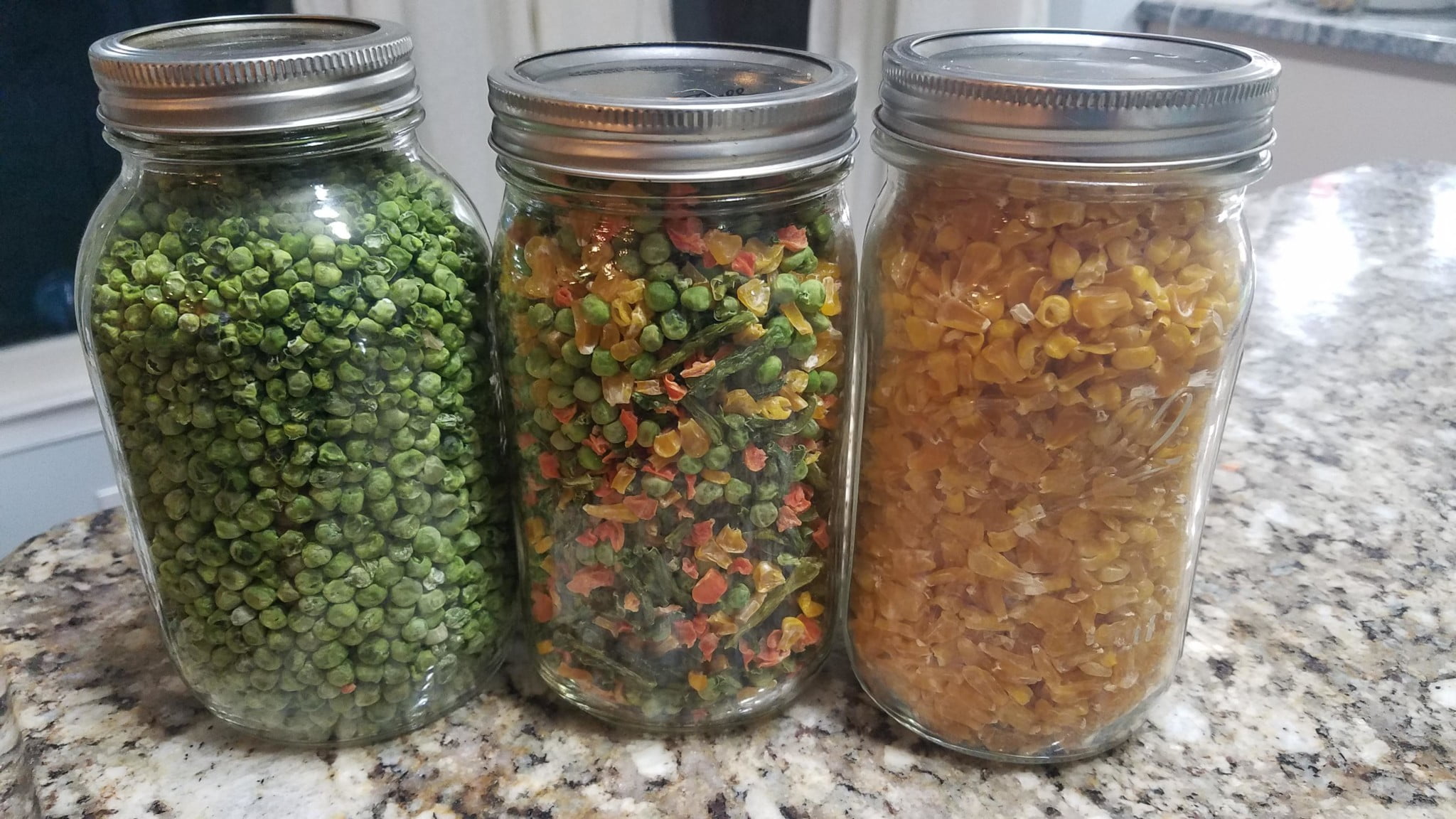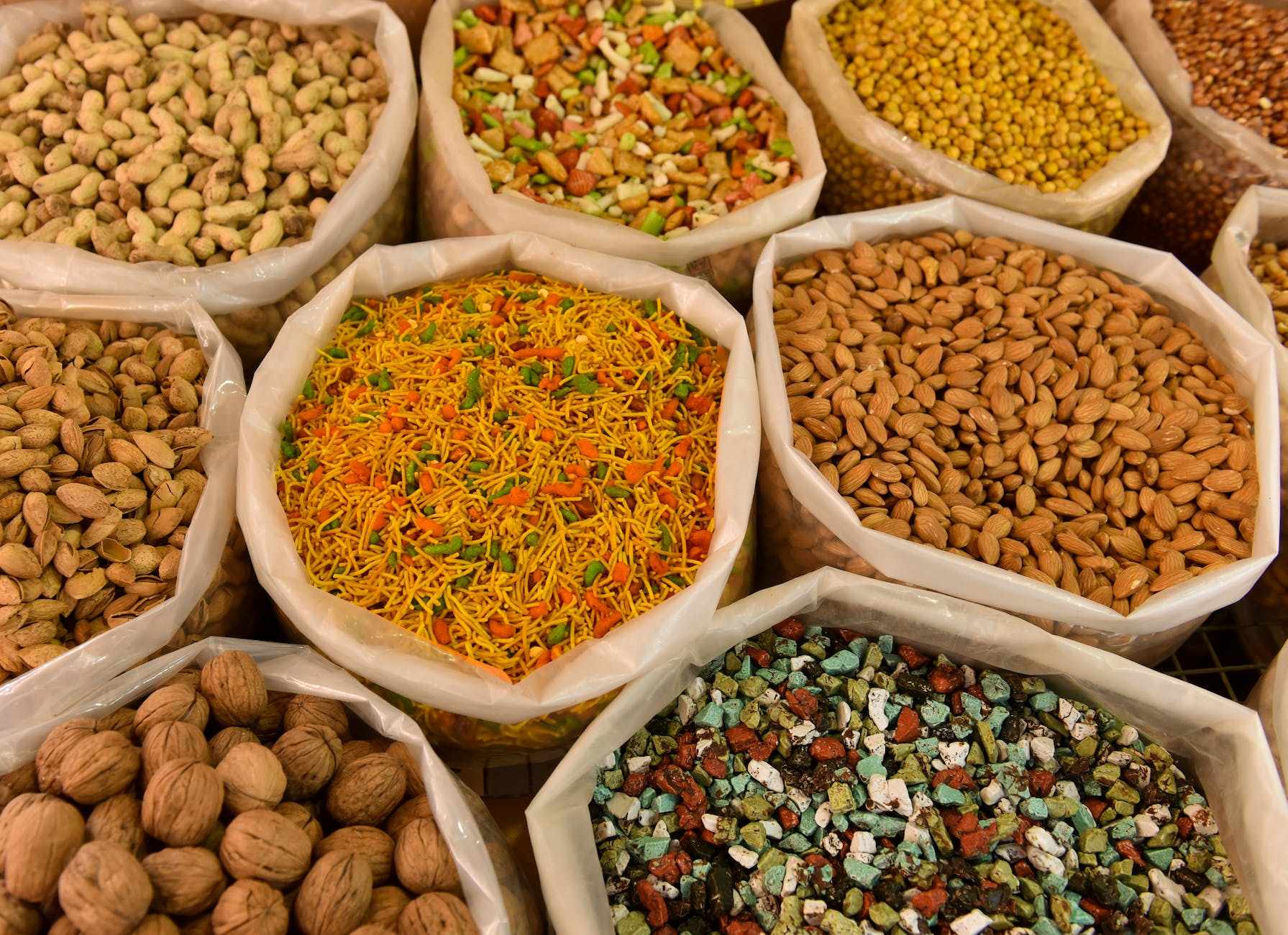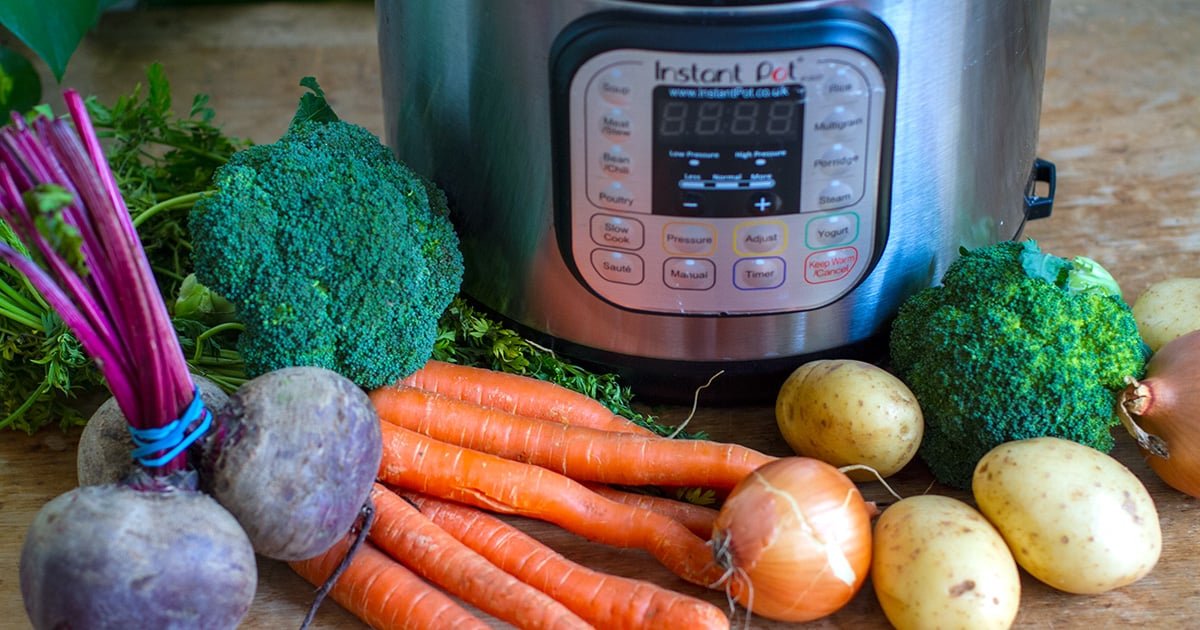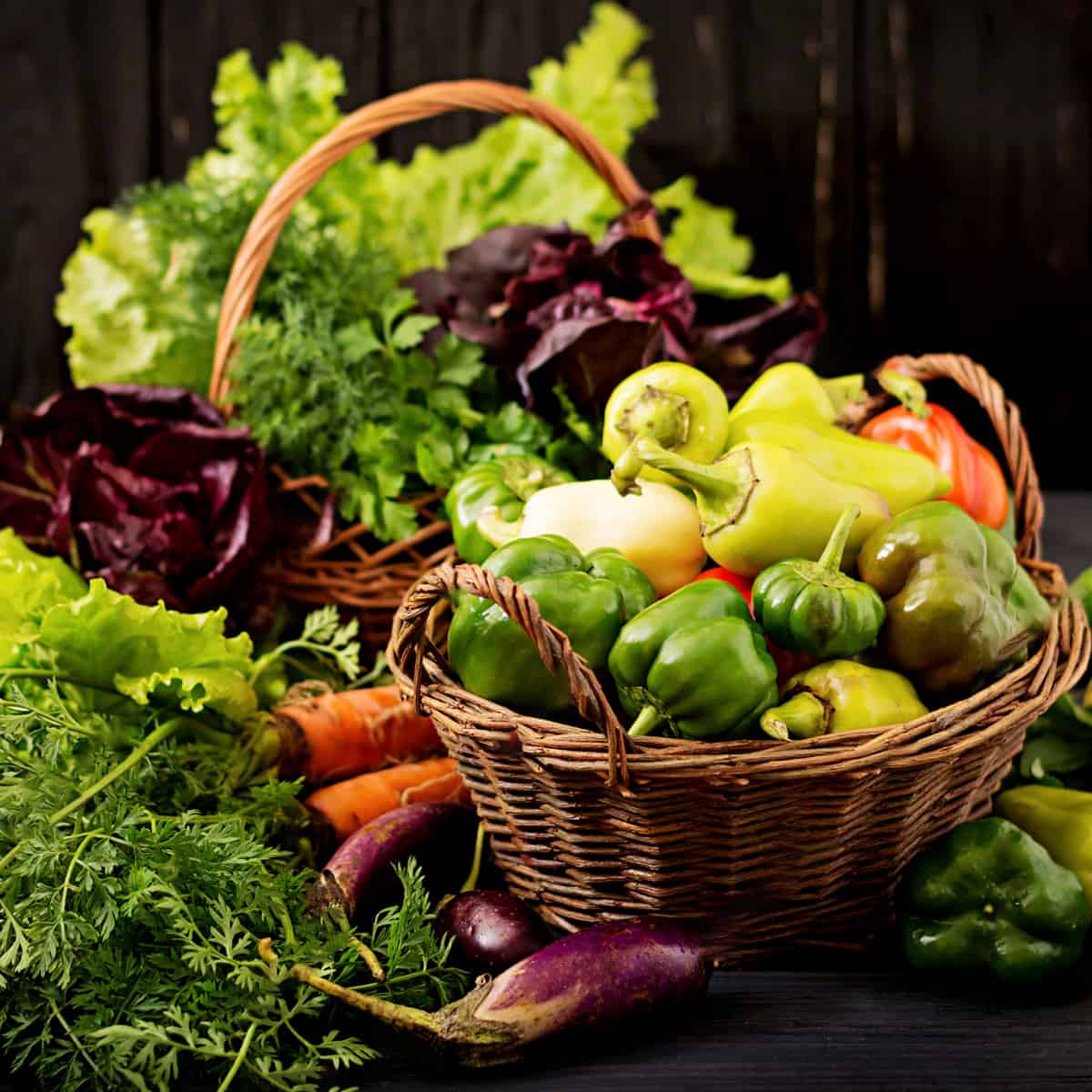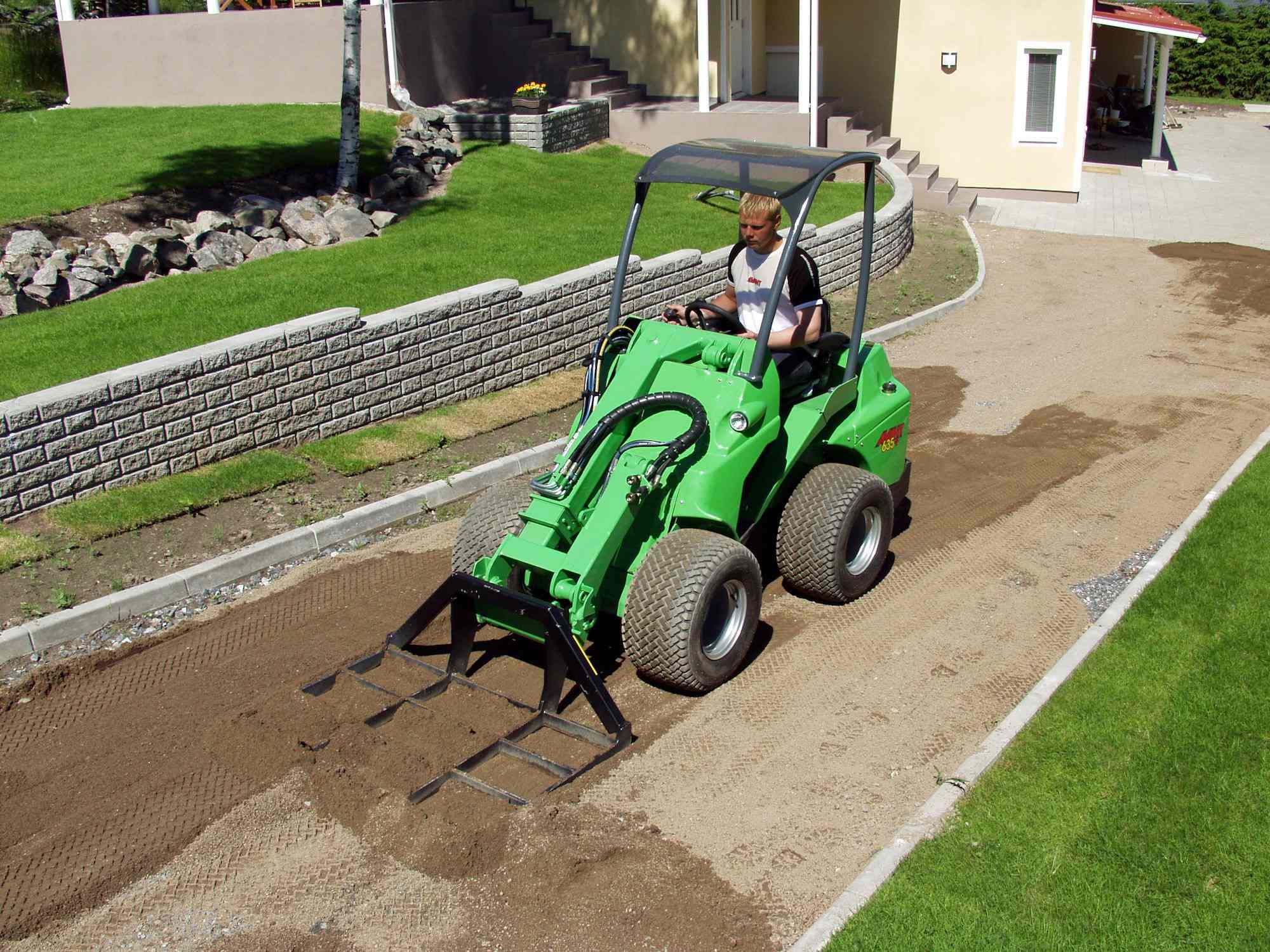Home>Gardening News and Trends>Latest News>How Long Can Vegetables Sit Out


Latest News
How Long Can Vegetables Sit Out
Modified: January 22, 2024
Stay updated with the latest news on how long vegetables can sit out. Discover the best practices to ensure the freshness and safety of your produce.
(Many of the links in this article redirect to a specific reviewed product. Your purchase of these products through affiliate links helps to generate commission for Chicagolandgardening.com, at no extra cost. Learn more)
Table of Contents
Introduction
Welcome to the world of vegetables! Whether you are an avid cook, a health-conscious individual, or simply enjoy the taste and versatility of vegetables, it is essential to understand their shelf life and proper storage practices. Knowing how long vegetables can sit out before they spoil can help you make informed decisions about their freshness and ensure that you are consuming safe and nutritious food.
Vegetables, being natural produce, have a limited shelf life due to their perishable nature. However, several factors impact how long they can remain fresh and edible. From the type of vegetable to its ripeness, temperature, and storage conditions, each variable plays a crucial role in determining the longevity of your veggies.
Proper storage practices are essential to maximize the shelf life of vegetables. This includes storing them at the right temperature, utilizing appropriate packaging, and understanding which vegetables should be kept together or separated. By following these guidelines, you can prevent premature spoilage and maintain the quality and flavor of your vegetables for as long as possible.
In this article, we will explore the factors that affect the shelf life of vegetables, delve into recommended storage practices, discuss common types of vegetables and their respective shelf lives, identify signs of spoilage, and provide tips on how to properly store leftover vegetables. Additionally, we will tackle the challenges of handling vegetables at parties or events, where they are prone to excessive exposure and may require extra care to ensure they remain safe for consumption.
By equipping yourself with this knowledge, you will be able to enjoy vegetables at their peak freshness and minimize food waste. So, let’s dive in and master the art of preserving the longevity and quality of our beloved vegetables!
Factors Affecting the Shelf Life of Vegetables
Several factors contribute to the overall shelf life of vegetables. Understanding these factors will help you make informed decisions when it comes to purchasing, storing, and consuming your favorite veggies. Here are the key factors that can impact the longevity of your vegetables:
- Type of Vegetable: Different vegetables have varying shelf lives. Some vegetables, like leafy greens and herbs, are highly perishable and have a shorter shelf life compared to root vegetables or winter squashes. Understanding the specific shelf life of each vegetable will help you plan your meals accordingly and avoid unnecessary spoilage.
- Ripeness: The level of ripeness at the time of purchase or harvest can significantly affect how long a vegetable will last. As vegetables ripen, they become more susceptible to spoilage. For example, firm and slightly underripe tomatoes will have a longer shelf life compared to soft and overripe ones.
- Temperature: Temperature plays a critical role in the shelf life of vegetables. Most vegetables fare best in cool temperatures, ideally between 32°F to 55°F (0°C to 13°C). Storing vegetables at higher temperatures can accelerate spoilage, while storing them at temperatures below freezing can lead to cellular damage and loss of quality.
- Humidity: The level of humidity in the storage environment also affects the shelf life of vegetables. Some vegetables, such as leafy greens and mushrooms, thrive in high humidity environments, while others, like onions and garlic, prefer low humidity. Optimizing the humidity level in your storage area will help extend the freshness of your vegetables.
- Exposure to Light: Light exposure can cause certain vegetables to deteriorate more quickly. Some vegetables, like potatoes, should be stored in a dark and cool place to prevent them from turning green and producing solanine, a toxic compound. On the other hand, leafy greens such as lettuce and spinach should be stored in a well-lit area to slow down the wilting process.
- Storage Containers: The type of storage container you use can impact the shelf life of vegetables. Proper storage containers should allow for airflow and prevent moisture buildup, which can accelerate spoilage. Avoid using plastic bags for extended storage, as they can trap moisture and promote decay.
By considering these factors and implementing appropriate storage practices, you can maximize the shelf life of your vegetables and minimize unnecessary waste. Let’s explore some recommended storage practices in the next section to help you keep your veggies fresh and delicious!
Recommended Storage Practices for Vegetables
Proper storage practices are key to extending the shelf life of vegetables and preserving their freshness. By following these recommendations, you can ensure that your vegetables stay crisp and flavorful for as long as possible:
- Separate Ethylene Producers and Ethylene-Sensitive Vegetables: Some vegetables produce a gas called ethylene, which can accelerate the ripening process and shorten the shelf life of ethylene-sensitive vegetables. Keep ethylene producers such as bananas, avocados, and tomatoes separate from ethylene-sensitive vegetables like leafy greens, carrots, and broccoli to prevent premature spoilage.
- Store in the Refrigerator: Most vegetables benefit from being stored in the refrigerator to maintain freshness. However, be mindful that some vegetables, such as potatoes and onions, should be stored in a cool, dry, and well-ventilated area instead of the fridge. The lower temperature in the refrigerator helps slow down the degradation process and preserves the quality of vegetables.
- Use Perforated Bags or Containers: To maintain proper airflow and prevent moisture buildup, store vegetables in perforated bags or containers. These allow excess moisture to escape and help prevent the growth of mold or bacteria. Alternatively, you can loosely wrap vegetables in a clean damp cloth or paper towel before placing them in a plastic bag with a few holes punched in it.
- Store Leafy Greens and Herbs Properly: Leafy greens and herbs have a short shelf life and can wilt quickly. To keep them fresh, trim the ends, wash and dry them thoroughly, and store them in a sealed container or a plastic bag with a damp paper towel. Alternatively, you can place them upright in a glass of water, similar to a bouquet, covering them loosely with a plastic bag.
- Do Not Store Wet Vegetables: Before storing vegetables in the refrigerator, make sure they are dry. Excess moisture can lead to mold or bacterial growth, speeding up spoilage. If vegetables are damp when you bring them home, gently pat them dry with a clean cloth or paper towel before storing them.
- Minimize Cutting and Chopping: Once a vegetable is cut or chopped, it starts to lose its freshness more rapidly. To prolong the freshness, cut or chop vegetables just before using them, rather than in advance. If you have leftover cut vegetables, store them in an airtight container or wrap them tightly in plastic wrap and refrigerate.
By implementing these recommended storage practices, you can significantly extend the shelf life of your vegetables and reduce food waste. Now that you know how to store your vegetables optimally, let’s move on to the next section, where we will explore the shelf life of common types of vegetables and how to identify signs of spoilage.
Common Types of Vegetables and Their Shelf Life
Vegetables come in various shapes, sizes, and textures, and their shelf life can vary significantly. Understanding the typical shelf life of different vegetables will help you plan your meals and prioritize the consumption of those with shorter shelf lives. Here are some common types of vegetables and their approximate shelf lives:
- Leafy Greens: Leafy greens, such as lettuce, spinach, and kale, have a relatively short shelf life. When stored properly in a perforated bag or container in the refrigerator, they can last around 3 to 7 days. However, delicate greens like arugula and watercress may wilt even within a few days.
- Root Vegetables: Root vegetables, including carrots, potatoes, beets, and radishes, can last for several weeks to months when stored in a cool and dark place. Carrots and radishes can be kept in the refrigerator for up to 2-4 weeks, while potatoes and beets can be stored for several months in a cool, dry, and well-ventilated area.
- Cruciferous Vegetables: Cruciferous vegetables like broccoli, cauliflower, and cabbage have a relatively extended shelf life. When stored in the refrigerator, they can last for about 1 to 2 weeks. To maintain their freshness, keep them in a perforated bag or wrap them in a damp cloth or paper towel before placing them in a plastic bag.
- Tomatoes: Tomatoes vary in their shelf life depending on their ripeness. Firm, unripe tomatoes can last up to a week when stored at room temperature. Ripe tomatoes, on the other hand, are best stored in the refrigerator to slow down the ripening process and can last for around 3 to 5 days.
- Onions: Onions have a long shelf life and can be stored for several months in a cool, dry, and well-ventilated area. However, once an onion is cut, it should be stored in the refrigerator and used within a few days.
- Peppers: Bell peppers and chili peppers can be stored in the refrigerator and last for around 1 to 2 weeks. To maximize their shelf life, store them in a plastic bag with some holes to maintain proper humidity.
Note that these are general guidelines, and the actual shelf life of vegetables can vary depending on their freshness at the time of purchase and the specific storage conditions in your home. Always inspect the vegetables for any signs of spoilage before consuming them, as individual variation may occur.
Now that we are familiar with the shelf life of different vegetables, let’s proceed to the next section, where we will explore the signs of spoilage to help you identify when it’s time to discard your vegetables.
Signs of Spoilage in Vegetables
Knowing how to recognize the signs of spoilage in vegetables is crucial for ensuring that you consume fresh and safe produce. Here are some common indicators that a vegetable may have spoiled:
- Discoloration: If you notice any significant changes in color, such as darkening, browning, or yellowing, it may indicate that the vegetable is starting to spoil. Pay close attention to spots or patches of mold, as these are clear signs of deterioration.
- Texture Changes: A slimy or mushy texture is a clear indication that the vegetable is past its prime. Vegetables should typically have a firm and crisp texture. If the texture has become soft and mushy, it’s best to discard the vegetable.
- Foul Odor: Spoiled vegetables often emit a foul odor, indicating the growth of bacteria or mold. If you detect a sharp or sour smell coming from a vegetable, it’s a strong indication that it has gone bad and should not be consumed.
- Lack of Freshness: Vegetables that appear wilted, shriveled, or have lost their vibrancy are likely past their prime. Fresh vegetables should be firm, plump, and have a vibrant color. If the vegetable looks tired or withered, it’s best to discard it.
- Slimy or Moldy Spots: The presence of slimy or moldy spots on a vegetable is a clear sign of spoilage. Mold can quickly spread and contaminate the entire vegetable, making it unsafe for consumption. It’s crucial to discard any vegetable with visible signs of mold or slime.
It’s important to note that the presence of one or more of these signs does not necessarily mean that the entire vegetable is spoiled. For instance, a small amount of mold on one part of a vegetable may be removed, and the rest can still be edible. However, it’s best to exercise caution and discard any vegetable that shows significant signs of spoilage.
By regularly inspecting your vegetables for these indicators of spoilage, you can ensure that you consume fresh and safe produce, promoting both your health and a reduction in food waste.
Now that we are well-versed in identifying signs of spoilage, let’s move on to the next section, where we will learn how to properly store leftover vegetables to prevent them from spoiling prematurely.
How to Properly Store Leftover Vegetables
Leftover vegetables can be a great way to save time and reduce food waste. However, improper storage can cause them to spoil quickly. Here are some tips on how to properly store your leftover vegetables to maintain their freshness:
- Cool Down Quickly: After cooking or steaming your vegetables, allow them to cool down to room temperature within two hours. Rapidly cooling them helps prevent bacterial growth and maintains the quality of the vegetables.
- Divide into Individual Portions: If you have a large amount of leftover vegetables, it’s best to divide them into individual portions. This allows for easier reheating later and prevents the need to reheat the entire batch, potentially causing overcooking and loss of texture.
- Transfer to Airtight Containers: Place the cooled leftover vegetables in airtight containers or resealable plastic bags. This helps seal in freshness and prevents exposure to air, which can cause vegetables to dry out or become contaminated.
- Label and Date: It’s important to label each container or bag with the contents and the date it was stored. This will help you keep track of how long the vegetables have been stored and ensure that you use them within a safe time frame.
- Store in the Refrigerator: Leftover vegetables should be stored in the refrigerator at a temperature below 40°F (4°C). The colder temperature slows down the growth of bacteria and preserves the quality of the vegetables. Use the vegetable crisper drawer, if available, or designate a specific area in the fridge for your leftovers.
- Use Within 3-4 Days: Leftover vegetables can typically be safely consumed within 3-4 days when stored properly in the refrigerator. After this time, the quality and taste may begin to deteriorate, and there is an increased risk of bacterial growth.
- Reheat Properly: When reheating leftover vegetables, ensure they are heated thoroughly to a safe internal temperature. Use methods such as stovetop, oven, or microwave, and stir or rotate the container to ensure even heating.
By following these storage guidelines, you can extend the shelf life of your leftover vegetables and enjoy them in additional meals. However, it’s important to note that cooked vegetables may lose some of their texture and flavor upon reheating, so it’s always best to consume them as soon as possible for the best taste and quality.
Now that you know how to properly store and handle leftover vegetables, let’s move on to the next section, where we will discuss how to handle vegetables at parties or events to ensure their freshness and safety.
Handling Vegetables at Parties or Events
When hosting a party or event, properly handling vegetables is essential to ensure their freshness and safety for your guests. Here are some tips on how to handle vegetables at parties or events:
- Choose Fresh Vegetables: Prioritize purchasing fresh and quality vegetables for your event. Select vegetables that are firm, vibrant in color, and free from any signs of spoilage, such as wilted leaves or mold.
- Prep Vegetables in Advance: Prepare and wash the vegetables ahead of time, if possible. Cut, slice, or chop them as desired for your dishes, but avoid doing so too far in advance to prevent loss of freshness and texture.
- Keep Vegetables Cool: Vegetables should be kept cool to prevent bacterial growth and maintain their crispness. Use chilled platters or bowls filled with ice to keep raw or cooked vegetables cool throughout the event. Avoid leaving them at room temperature for an extended period.
- Offer a Variety of Fresh Dips: Provide a variety of fresh and refrigerated dips to accompany the vegetables. Dips like hummus, yogurt-based dressings, or salsa can enhance the flavor and provide a refreshing element for your guests.
- Arrange Vegetables Beautifully: Display the vegetables in an attractive and appealing manner. Arrange them on platters or in baskets, making sure to separate different types of vegetables to avoid cross-contamination. Consider adding garnishes or herb sprigs for an added touch.
- Monitor and Refill: Keep a close eye on the vegetable platters throughout the event. Refill them as needed to ensure that there is always a fresh supply available for your guests. Discard any leftover vegetables that have been sitting out for more than two hours.
- Store Leftovers Properly: If there are leftover vegetables at the end of the event, promptly transfer them to airtight containers and refrigerate them within two hours. Follow the recommended storage practices mentioned earlier to maintain their freshness and prevent spoilage.
By following these guidelines, you can ensure that the vegetables served at your parties or events remain fresh, safe, and visually appealing for your guests to enjoy. Remember, it’s important to prioritize food safety to provide a memorable and enjoyable experience for everyone.
Now that we have covered the best practices for handling vegetables at parties and events, let’s move on to the concluding remarks of this article, where we will recap the key points discussed.
Conclusion
Properly understanding the factors that affect the shelf life of vegetables and implementing recommended storage practices are crucial for minimizing food waste and ensuring the freshness and safety of your produce. By considering aspects such as the type of vegetable, ripeness, temperature, humidity, exposure to light, and storage containers, you can significantly extend the shelf life of your vegetables.
We have explored the shelf life of common types of vegetables, ranging from leafy greens and root vegetables to tomatoes and onions. By being aware of their respective shelf lives, you can plan your meals and prioritize the consumption of those with shorter shelf lives, reducing unnecessary spoilage.
Recognizing signs of spoilage in vegetables, such as discoloration, texture changes, foul odor, lack of freshness, and the presence of mold or slime, is crucial for ensuring that you consume fresh and safe produce. Regularly inspecting your vegetables will help you identify when it’s time to discard them to avoid any health risks.
Additionally, we discussed how to properly store leftover vegetables to maintain their freshness. From cooling them quickly, dividing them into individual portions, and transferring them to airtight containers to storing them in the refrigerator and using them within a few days, these practices can help you make the most of your leftovers without compromising their quality.
Lastly, we provided tips for handling vegetables at parties or events, emphasizing the importance of choosing fresh vegetables, prepping them in advance, keeping them cool, offering fresh dips, arranging them beautifully, monitoring and refilling the platters, and storing leftovers properly.
By following the recommendations outlined in this article, you can maximize the shelf life of your vegetables, reduce food waste, and enjoy fresh, nutritious produce for longer periods. So, whether you are cooking for yourself, your family, or hosting a gathering, remember the importance of proper vegetable storage and handling, and savor the freshness and flavors that vegetables bring to your meals.
